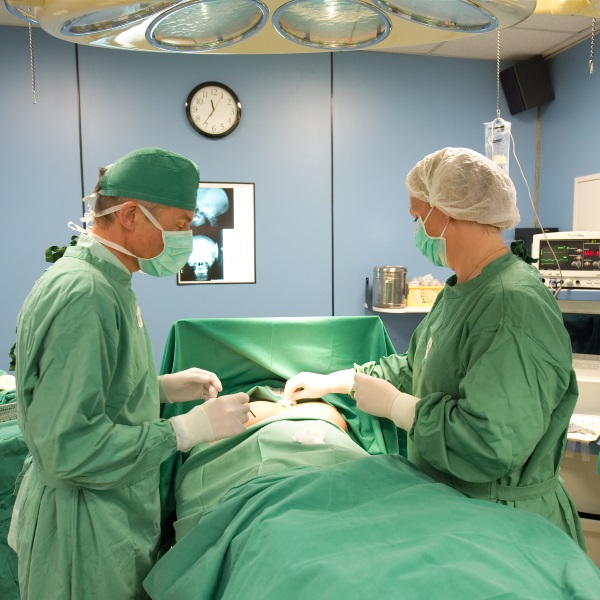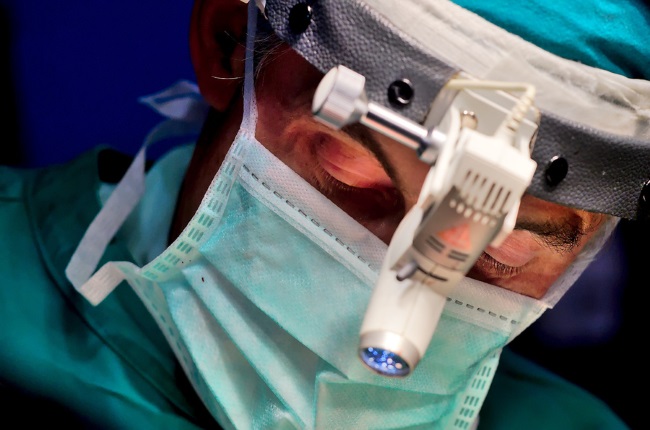James Drew talks aesthetic surgery with one of Brussels’ leading aesthetic surgeons, Dr. Louis-Phillipe Dombard.
James wanted to find out how he provides care for his patients during their time with him, and what he considers will be important to the future of his profession.
There are several reasons why it is such a pleasure to talk with Dr. Louis-Philippe Dombard about his life, work and ambitions – not least is the delightful ambiance of his clinic, which is connected to his own house and really does seem to be like sitting in the lovely home of an old friend. Think flowers, tasteful objets d’art and coffee tables.
Another is his passion, which is apparent from the moment that Dr. Dombard opens his mouth.
“One of the most important points is this,” he says. “A patient comes to me and says that he wants plastic surgery, and they are frequently nervous or even afraid to begin with.
““I want to show them how I will perform the surgery. But frequently they say, oh no, I cannot even support the idea of blood, or pain, so they are often really afraid – this is because they do not know about the procedures, so their imagination is working overtime.
“But, nevertheless, they have come to my surgery, because they want to work on their body, but it’s not only about their body – the surgery that they want from me is part of creating the wellbeing that they desire, because they have a plan, and it is their plan that is the much more important factor.
“It is a plan for their life, they want to be involved in a ‘love story’; they want their body to be perfect, nice face, nice breasts, and so on, but they need the self confidence that only I can give them, both to begin and then continue with the work that we have to do together.”
Aesthetic surgery is an ancient art – treatments for the plastic repair of a broken nose are first mentioned in the Edwin Smith Papyrus, a transcription of an ancient Egyptian medical text, some of the oldest known surgical treatise, that date from 3000 to 2500 BC, and reconstructive surgery techniques were being carried out in India by 800 BC.
Today, aesthetic surgery is baldly defined as ‘surgery in which the principal purpose is to improve the appearance’ but, for Dr. Dombard, it is about much more than that.
“The question is, why do people come to me to have aesthetic surgery performed? And the answer? It is perhaps somewhat difficult to respond with one answer, because if I have for instance a mother and daughter who come to me, and it’s the daughter who wants surgery, it is often the mother who is asking all the questions, because she cares very much about her daughter whereas the daughter doesn’t really want to know about what is going to happen, or not as much.
“If you ask a surgeon, can you perform aesthetic surgery for me, most surgeons will doubtless say ‘Yes, of course’. In aesthetic surgery, the patient dreams, the patient has to dream, and many surgeons use the patient’s dream for their own interests. This is simply not correct.
“The aesthetic surgeon must be much more oriented by an aesthetic education, by the proportions of his patient’s body and his patient’s dreams, but it is so frequently the questions of money that drive the relationship between patient and surgeon, and not the art.”
 So, how does Dr. Dombard ensure that his patients know he only has their very best interests at heart?
So, how does Dr. Dombard ensure that his patients know he only has their very best interests at heart?
“You give me a very simple room, sufficient light and very few instruments, and I will perform wonderful surgery. If you have the tools, and the real tools are your hands, you can do it.
“People speak about technology – OK, it is very interesting that in the future we will have new technology but, with new technology, you will have new problems. The human body has been the same for many millennia – so, if you have enough money, if you are rich, if you want the best, then you can pay a lot, for high-technology, for laser surgery and so on, but you are not necessarily getting high results. You can achieve fantastic results with simple tools.
“And this is why so many patients are frequently so disappointed after aesthetic surgery – it is not just about the technology, it’s about how to perform the surgery as best as you really can. Surgeons frequently prefer, after finishing their studies, to start making money directly, when in fact they should be taking more time to visit other surgeons, to see their work, to learn about anatomy, before they begin working with patients.”
And Dr. Dombard himself took his own inspiration from another plastic-aesthetic surgeon early in his own career – while in Germany, continuing his medical studies, he read about one Professor Ivo Pitanguy, a world-famous plastic surgeon and professor in Rio de Janeiro.
As Dr. Dombard explains: “I didn’t know him, but I said, ‘I will work with this man’.” He flew to Brazil and went straight to the clinic. Professor Pitanguy, who usually selects only around five surgeons from the 100 or more who apply to work with him each year, gave Dombard specific instructions. “Learn Portuguese, get recommendation letters and take a placement test,” he told him. “Then try again.”
Two years later, Dombard was back in Brazil. This time, he was ready – he knew the language, took the test and was accepted into Pitanguy’s program. For three years, he lived in Brazil and learned from the best. It was from Pitanguy that Dombard says he learned the importance of the relationship between the patient and the surgeon — a surgeon must choose the patient, just as the patient chooses the surgeon.
And Dr. Dombard has being doing just that for more than 20 years now at his Overijse clinic; the establishment offers a wide range of facial aesthetic surgery of the face, as well as rhinoplasties, liposuctions, breast implants, lipofilling and skin treatments.
So, what does Dr. Dombard believe will be important in the future of his profession?
“In the future, we will perhaps have a lot of new technology – that’s fantastic, but then you need somebody to perform the surgery, and there is the problem, and this is perhaps the weakest link. The patient has his or her wishes, the technology is OK, but we need the surgeon with his hands. We cannot use a robot, because this is art. It’s like if you took ten artists, painters, and you gave them an easel and beautiful paints, then you say paint something – you will probably end up with one good painting, and the rest will be no good.”
So, it’s about sincerity, it’s about passion for the art, it is about more than money – how likely does he think it is that more surgeons will follow his example straight out of their studies?
“That’s a good question. Naturally, I cannot speak for every surgeon in the world, but I would like to hope that more and more, as technology inevitably advances in tandem with the art of aesthetic surgery, that more and more surgeons will look first at what they are aiming to provide their patients with, and not the other way round.
“All told, I am optimistic – and I know that all I can do is keep on doing what I am doing.”
Something for which this writer feels many will be grateful for the length of Dr. Dombard’s career.
Gemslaan 42, 3090 Overijse Brussels
Tel: +32 (0) 2 687 2285
www.chirurgiedombard.com
Photos: Luc Viatour







